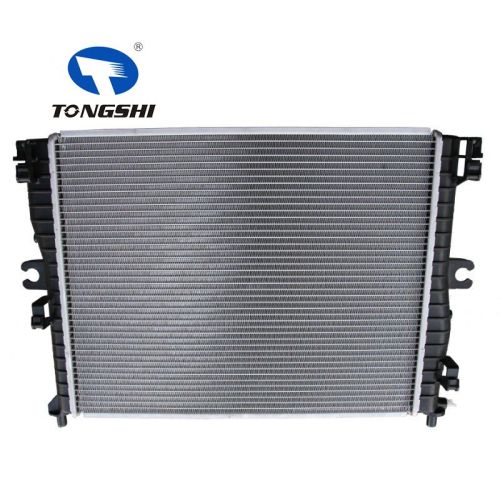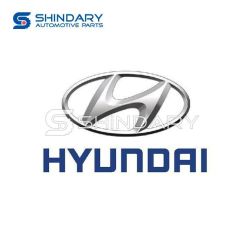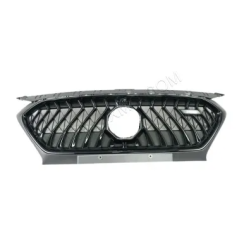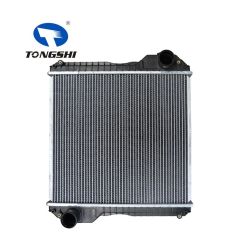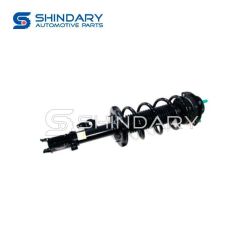GM,DODGE CORVETTE Z06 V8 6.2L
GM,DODGE CORVETTE Z06 V8 6.2L
Product Description
Product information
TS NO. :79338
MODELS: GM,DODGE CORVETTE Z06 V8 6.2L
CORE SIZE:546*438
OEM:202979405/23217826
The research and development process of an automotive radiator typically involves the following steps:
Market research and demand analysis: The R&D team begins by conducting market research to understand the current demands and trends in the automotive market. They study the radiator requirements for different vehicle models and analyze the pros and cons of existing radiators in terms of performance, efficiency, and durability.
Concept design: Based on the market research and demand analysis, the R&D team starts the conceptual design of the radiator. They consider aspects such as the radiator's shape, size, material selection, as well as the layout of fins and coolant channels. Computer-aided design (CAD) software is often used at this stage to create and evaluate different design concepts.
Engineering design and simulation: Once the concept design is finalized, the R&D team proceeds with detailed engineering design and utilizes computer simulation software for performance and fluid dynamics analysis. They simulate the radiator's operation under various conditions to evaluate factors such as heat dissipation performance, flow distribution, and pressure drop.
Prototype fabrication and testing: Based on the engineering design, prototype radiators are fabricated and subjected to actual testing. These tests may include cooling capacity evaluation, pressure resistance, leakage detection, and compatibility testing on real vehicles. The test results are used to assess the radiator's performance and reliability, and necessary improvements are made accordingly.
Optimization and refinement: Based on the test results and feedback, the R&D team optimizes and refines the radiator design. This may involve design adjustments, material replacements, or process improvements to enhance the radiator's performance and quality.
Mass production: Once the radiator design and performance meet the expectations, the R&D team prepares for mass production. This involves collaboration with suppliers and manufacturers to ensure that the radiator is produced and assembled according to the specified standards and requirements.
The Passenger Vehicle Division has advanced production equipment and a strict product quality assurance system. It produces more than forty-two series of more than 8000 models of radiators for cars, mini vehicles, light vehicles and truck. A series of complete production process lines including parts cleaning,core assembly , core brazing, water chamber withholding product inspection,product packaging, ect.
The heat dissipation belt is made of a combined folded edge belt,whch improves the ability of the heat dissipation belt to resist lodging and ensures the stability of the crest distance. The crest distance is stable at 2.9-3.0, which is better than domestic counterparts and improve the heat dissipation efficiency of the product. The material is AA3003.
The division strictly follows the requirement of OEM standards to do a good job of product quality, and strictly controls each production process. After continuous developement, its design level, process level, product quality, business reputation and marketing service quality have been continously improved, and it has strong market competitiveness.
The production process of an automotive radiator typically includes the following main steps:
Design and planning: The manufacturer designs and plans the radiator based on the car model and specifications. This involves determining the radiator's size, materials, cooling efficiency, and other technical requirements.
Material preparation: Prior to production, the materials required for the radiator are prepared. These primarily include aluminum alloy or copper alloy sheets, plastic end tanks, pipes, and solder. These materials will be used to manufacture the core structure and cooling circuits of the radiator.
Core manufacturing: The radiator's core structure typically consists of a series of closely spaced parallel tubes and fins. Firstly, the manufacturer employs stamping techniques to shape and size the metal sheets accordingly. Then, these sheets are stacked together to form the parallel cooling tubes. Subsequently, the tubes and fins are fixed together using welding or aluminum brazing, creating a complete radiator core.
Assembly: Once the core and end tanks are manufactured, they are assembled together. This involves connecting the end tanks to the radiator core and securing them using welding, adhesives, or other connection techniques.
Testing and quality control: After assembly, the radiator undergoes a series of testing and quality control procedures to ensure proper functioning and compliance with standard requirements. These tests may include pressure testing, leakage testing, and cooling performance testing, among others.
Packaging and shipment: Once the radiator passes testing and quality control, it is packaged and prepared for shipment. Packaging typically involves measures to prevent shock and corrosion, ensuring the product's safety during transportation and storage.
